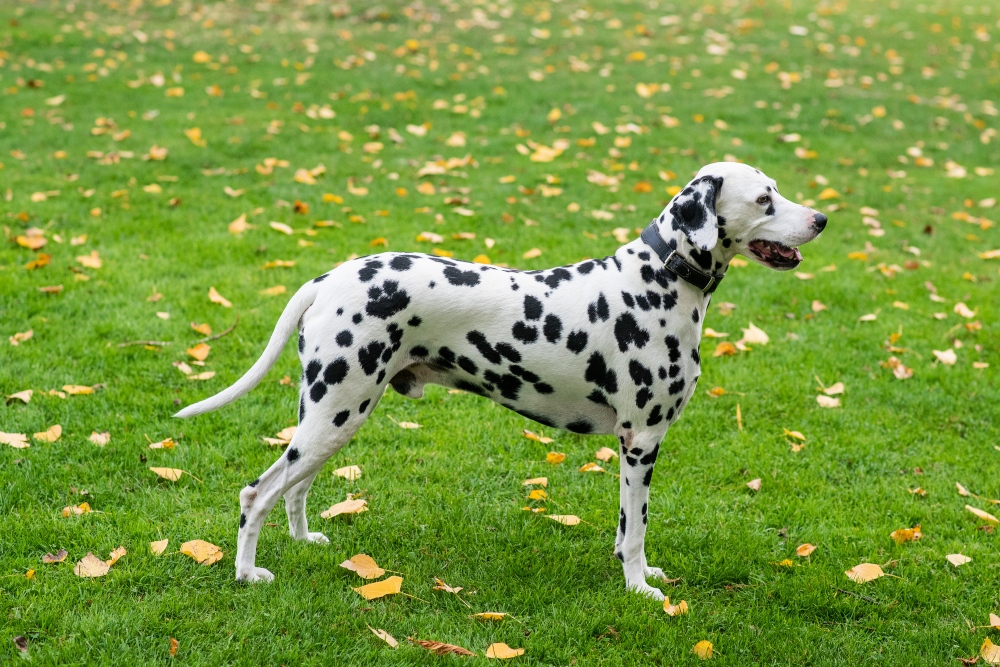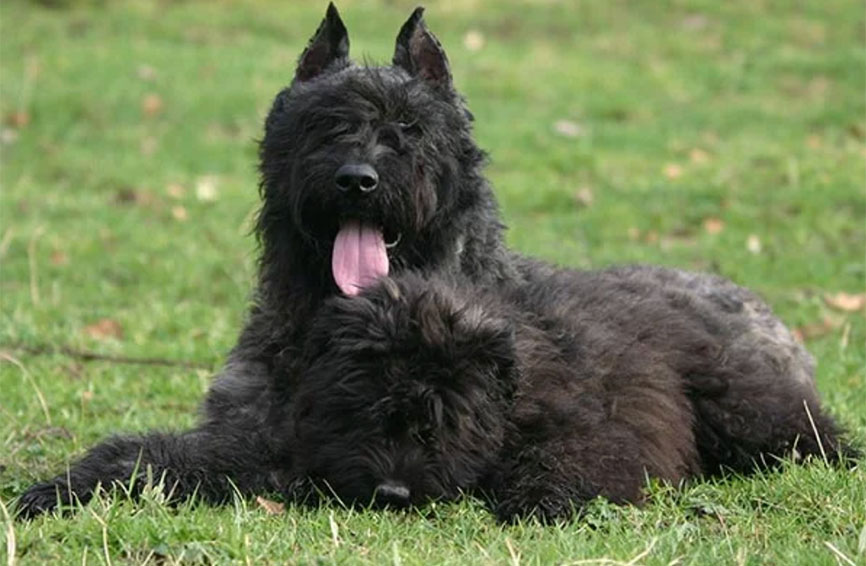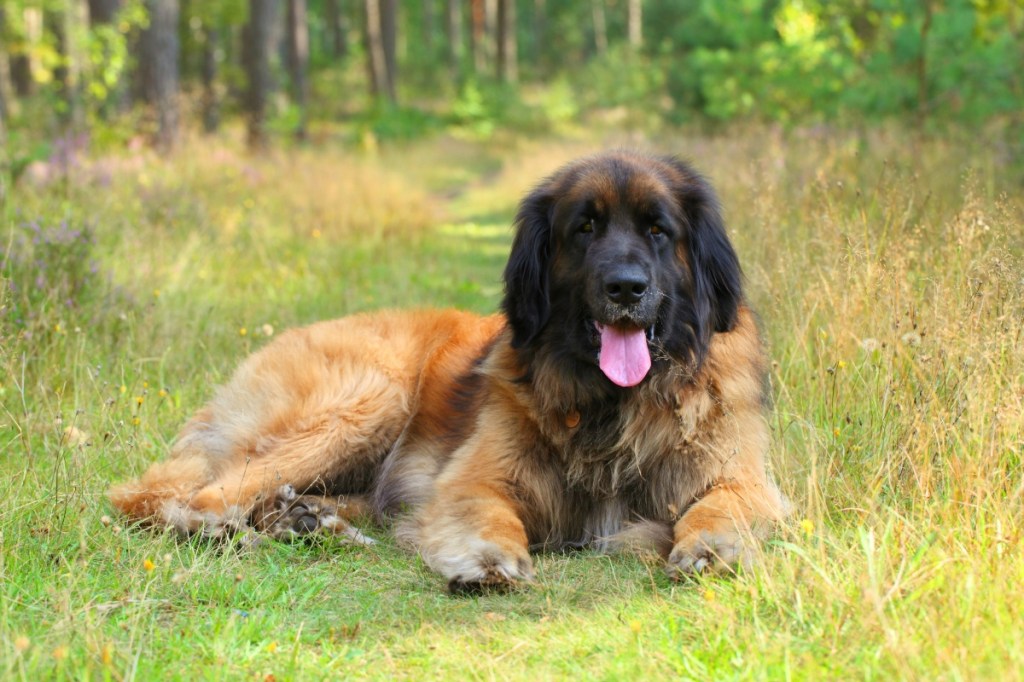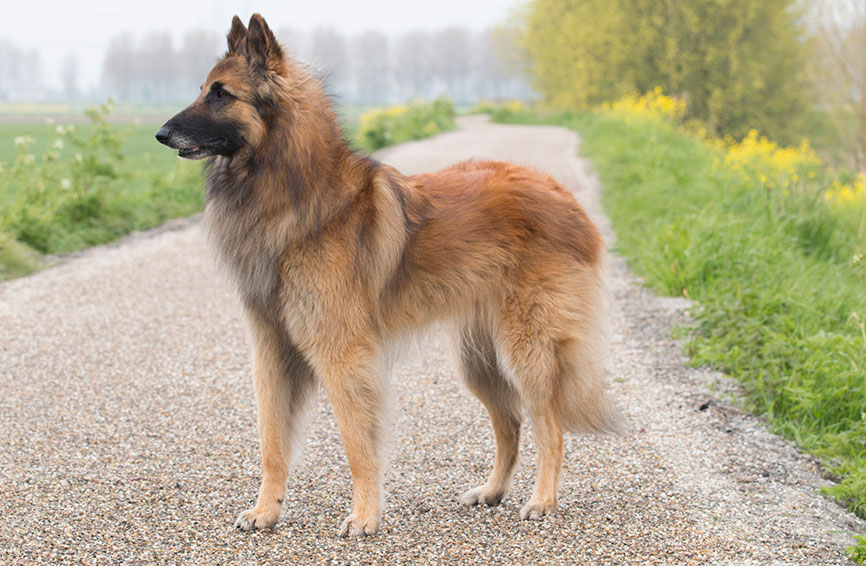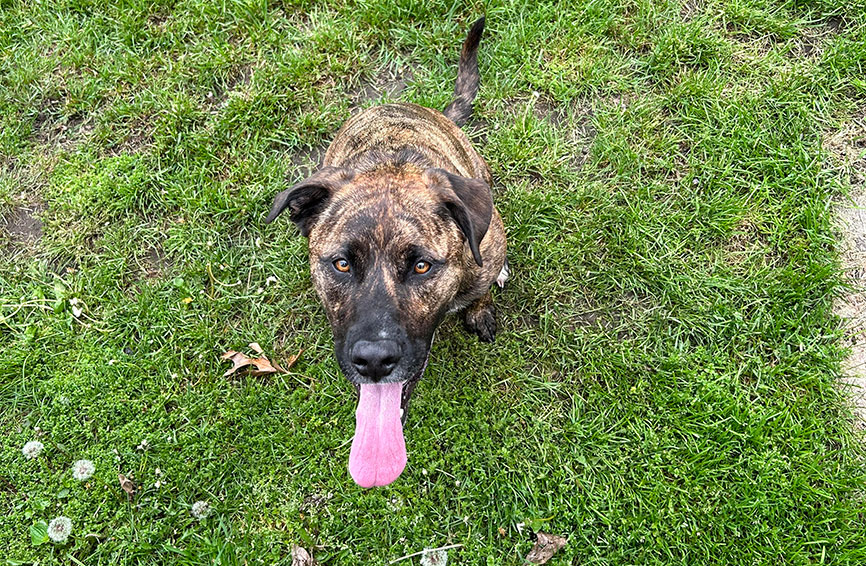Table of Contents
Introduction to Dalmatians
Perhaps best known for being the preferred dog of firemen, Dalmatians are smart, dignified, and outgoing canines. They have a very distinctive coloration that is typically white with black spots and are graceful, elegant, and strong. They were originally bred to be guards for horses and coaches, and they still have protective instincts today that make them good watchdogs.
If an athletic dog that’s adorable and unique sounds like the perfect addition to your family, read on to learn more about the Dalmatian breed and how to take the best care of your pup’s health.
Size of Dalmatians
Fully grown Dalmatians will weigh anywhere between 45 and 70 pounds. The adult height of a Dalmatian is 19 to 24 inches tall. These dogs typically reach their final size between 12 and 16 months of age. However, many Dalmatians will not mentally mature until age two or later.
Below is a chart detailing how big you can expect your Dalmatian to get as the dog grows from puppyhood to adulthood. Female weights are at the low end of the range, and male weights are at the high end.
| Weight Chart | 3 months | 6 months | 9 months | 12 months | 16 months |
| Female and Male Dalmatians | 11-27 lbs. | 21-52 lbs. | 31-65 lbs. | 35-70 lbs. | 35-70 lbs. |
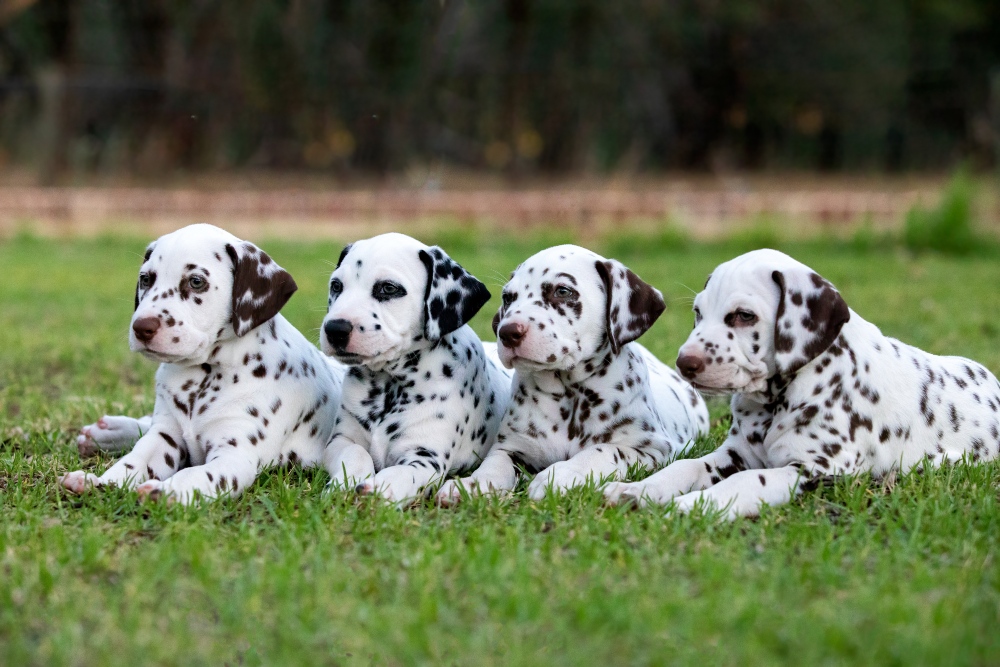
Characteristics of Dalmatians
There are certain characteristics that define a Dalmatian dog, such as being athletic, sleek, and high-energy. These dogs have lots of energy and make great jogging partners. They are very intelligent dogs that can be stubborn and need to be trained early so that they become used to following rules. Dalmatians typically get along well with children and other pets (dogs and horses more so than cats), and they are truly a joy to get to know and have fun playing with.
As you get to know a Dalmatian’s personality, here’s what you can expect based on his or her breed characteristics:
| Breed Characteristic | Level (High, Medium, Low) |
| Affectionate with People | High |
| Good with Kids | High |
| Good with Pets | Medium |
| Need for Exercise | High |
| Energy Level | High |
| Intelligence Level | High |
| Able to Be Trained | Medium |
| Amount of Barking | Medium |
| Amount of Shedding | High |
History of Dalmatians
There are conflicting historical reports about the exact origins of the Dalmatian, as there are theories that connect the breed to Europe, the British Isles, North Africa, and Asia. But by the early 1800s, the breed was prominent in Central Europe, especially in a region called Dalmatia that is along the Adriatic Sea. This region, which is now known as Croatia, is where the “Dalmatian” name is derived from.
Dalmatians are a coach dog breed, which means that they were bred to trot alongside coaches pulled by horses. The early Dalmatians guarded horses and the gear they carried. The Romani people, who were nomadic throughout Europe, used Dalmatians extensively. However, British nobles also used these dogs for work tasks, and they were soon accompanying horses pulling non-motorized fire engines. This is how the dogs first became associated with firefighters and fire stations. Many firehouses still have Dalmatian dogs as part of their firefighting teams today. The American Kennel Club first recognized the Dalmatian as a breed in 1888.
Dalmatian Standard Information
These distinctive dogs are poised and alert, never shy, and capable of great endurance. These are some of the characteristics outlined in the breed standard for the Dalmatian, a description of the ideal dog of this breed by which all Dalmatians are judged at competitions.
Here is an overview of the breed standard information for Dalmatians:
Head:
- Fair length and free of loose skin
- Alert expression and outgoing temperament
- Eyes medium-sized and set well apart
- Brown or blue eye color
- Ears of moderate size and proportionately wide
- Powerful muzzle
- Nose completely pigmented on the leather
- Scissors bite
Neck, Topline, Body:
- Nicely arched neck, free from throatiness
- Smooth topline and deep chest
- Short, muscular, and slightly arched loin
- Tail a natural extension of the topline
Forequarters:
- Shoulders well laid back and smoothly muscled
- Elbows close to the body
- Slight angle at the pastern
- Front and back feet are round, compact, and with elastic pads and well-arched toes
- Dewclaws may be removed
Hindquarters:
- Powerful with smooth and well-defined muscles
- Hocks well let down
- Hind legs parallel to each other when viewed from the rear
Coat:
- Short, dense, fine, and close-fitting
- Neither wooly nor silky
- Sleek and glossy appearance
Color:
- Ground color is pure white
- Black-spotted dogs have dense black spots
- Liver-spotted dogs have liver-brown spots
- Spots are from the size of a dime to the size of a half-dollar
Gait:
- Steady and effortless
- Smooth and efficient action
- Tendency to single-track as trot speed increases
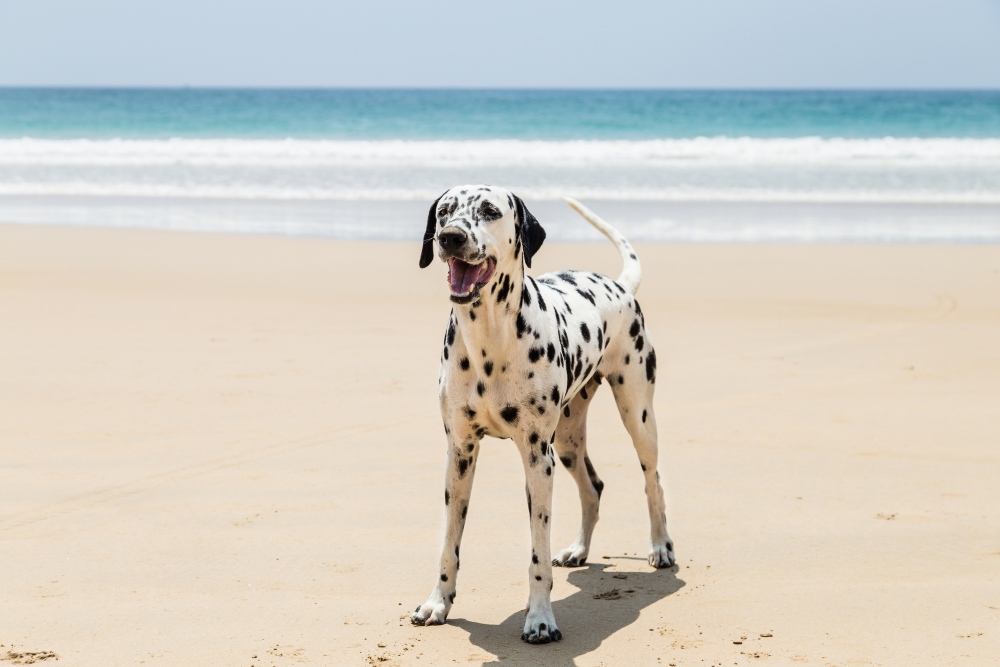
Caring for Dalmatians
Dalmatians are active dogs that need room to move around and to get plenty of exercise. Therefore, they are best cared for in homes with a yard to run around in – or at least get several walks or runs per day if they live in a small space. The dogs don’t like living outside in cold weather, and they need mental stimulation so that they don’t become bored and destructive.
Here are some general tips for taking the best care of a Dalmatian:
Best Living Environments:
- Home with a yard to play in
- Access to consistent outdoor recreation
- Households with children are fine for this breed
Type of Exercise:
- Runs with family members
- Running alongside a bicycle
- Daily long, brisk walks or hikes
- Off-leash dog parks
Mental Enrichment:
- Provide with toys for stimulation
- Agility training courses
- Cozy time indoors with family
Training Strategies:
- Dalmatians can be sensitive so use positive, reward-based training
- Start training early for this potentially independent and stubborn breed
- Train to walk beside the human and not be the leader
Grooming Tips:
- Dalmatians have little or no odor and fairly dirt-repellent coats
- Shedding occurs year-around
- Brush weekly with a medium rubber brush
- Only needs a bath three or four times per year or when dirty
- Trim nails monthly unless worn down naturally outdoors
- Brush teeth daily
Common Health Problems of Dalmatians
The average life expectancy for a Dalmatian is 11 to 13 years. If you get your Dalmatian from a breeder, you will want to get a record of the genetic health tests that were done on the puppy’s parents. Deafness is a major issue with this breed, so it is very important to have hearing (BAER) tests done for parent dogs. The national breed club for Dalmatians also recommends that dogs have hip evaluations and thyroid or eye testing done.
These are some of the most common health issues that arise with Dalmatians:
- Deafness
- Hip dysplasia
- Urolithiasis (urinary tract stones)
- Skin allergies
- Iris sphincter dysplasia (sensitivity to bright light and poor night vision)

Diet and Nutrition for Dalmatians
Most adult dogs will thrive when eating a high-quality, nutritionally complete and balanced dog food. Dalmatian puppies should eat puppy food until they are around 12-16 months old. If you feed your Dalmatian homemade dog food, make sure you are working from a recipe that is designed by a veterinary nutritionist and is appropriate for your dog’s age and health status.
Feed the amount of dog food needed to keep your pet slim. You should be able to see your dog’s waist and feel (but not see) their ribs without having to press too hard. In general, puppies need more calories per day than adults, but a dog’s needs will vary with his or her activity level and other factors. Don’t leave food out all day for a Dalmatian to graze on. Divide the total amount of food for the day into at least two meals for adults and three meals for puppies. Place the food out in a bowl at approximately the same time in the morning and evening each day.
Talk to your veterinarian if you have any questions about your Dalmatian’s diet or health.
Where to Adopt or Purchase Dalmatians
Some people who love the Dalmatian breed want a purebred Dalmatian purchase puppies through breeders associated with the AKC Marketplace or the Dalmatian Club of America. However, many people bring a Dalmatian into their lives because they love the way the dog looks but don’t fully understand what it takes to care for one. Therefore, many Dalmatians end up in shelters and are in need of adoption.
Here is a sampling of rescue groups that focus on the Dalmatian breed:
- Dalmatian Rescue of Colorado
- Dalmatian Rescue of S. Florida
- Willing Heart Dalmatian Rescue
- Recycled Canines Dalmatian Rescue of Houston
- Carolina DalPals Dalmatian Rescue
- Dal-Savers Dalmatian Rescue
- Antelope Valley Dalmatian Rescue
- Adopt a Spot Virginia
- Dalmatian Rescue of N. Texas
- Dalmatian Rescue of the Carolinas
- Tennessee Dalmatian Rescue
- Dalmatian Rescue of California Central Coast
- Dalmatian Rescue of Southern California
- SPOTSAVERS Dalmatian Assistance League of St. Louis
- Dalmatian Rescue of Illinois
- Albuquerque Dalmatian Rescue
Related Breeds
There are other breeds of dogs that share characteristics similar to the Dalmatian that you might want to learn more about before making a decision about adopting or purchasing a new dog. Here are some other breeds to consider:
- German shorthaired pointer
- English springer spaniel
- Bluetick coonhound
- Australian cattle dog
- Brittany spaniel
Pet Insurance for Dalmatians
Dalmatians are generally healthy dogs, but accidents and illnesses still occur with this breed and can cost families a pretty penny when veterinary bills start rolling in. Healthy Paws is proud to offer Dalmatian pet health insurance with comprehensive coverage to address hereditary and congenital conditions, cancer, chronic conditions, emergency care, hip dysplasia, alternative care, and more.
For your Dalmatian insurance quote, complete our online form with a few details about your pet and see your rates today.
